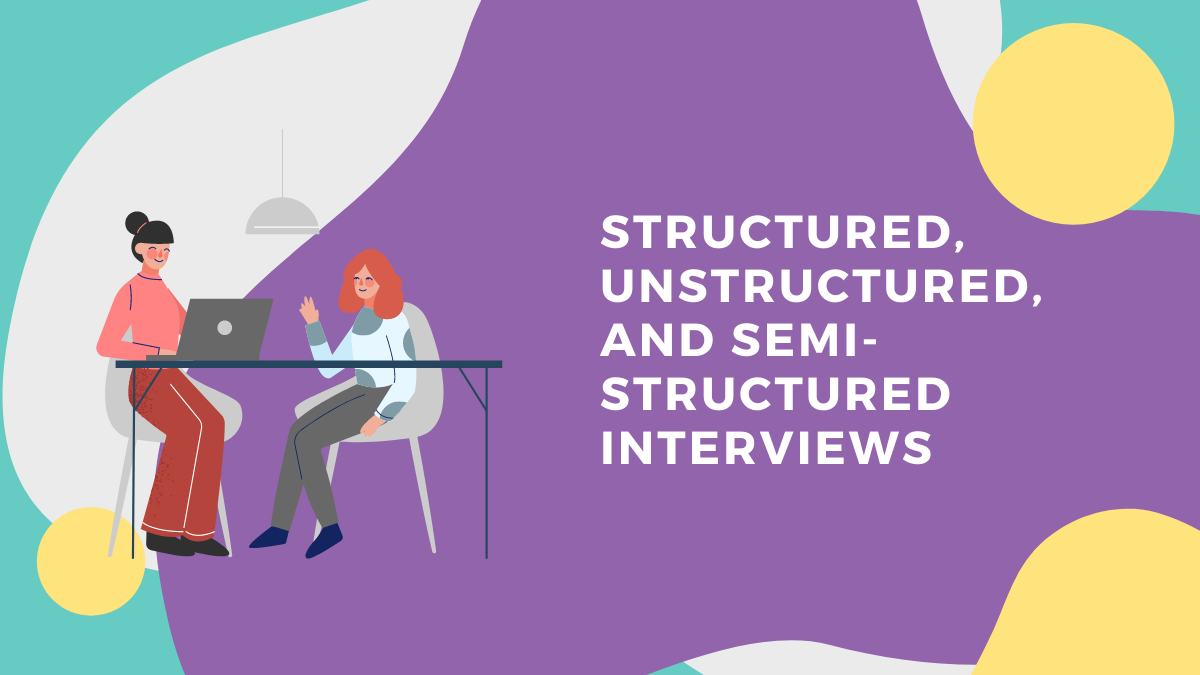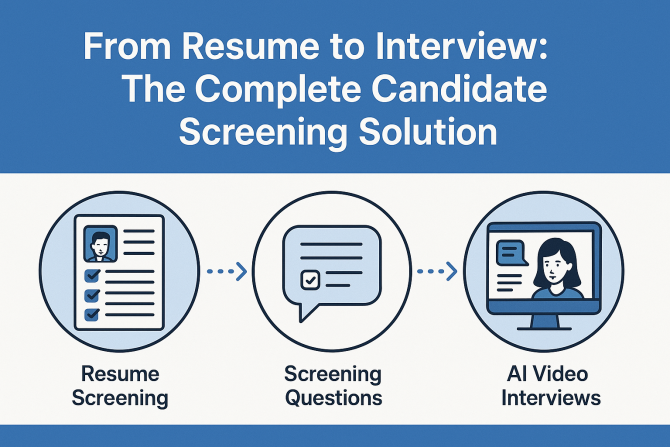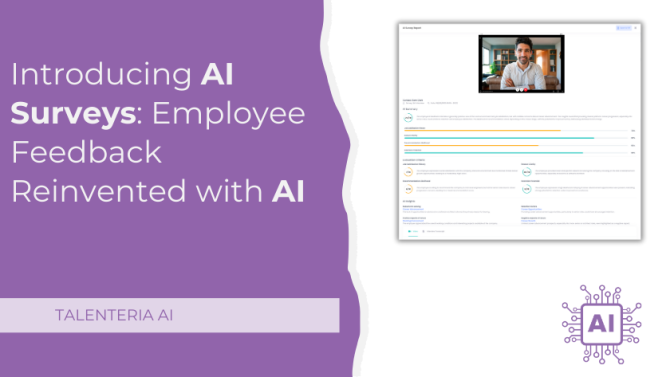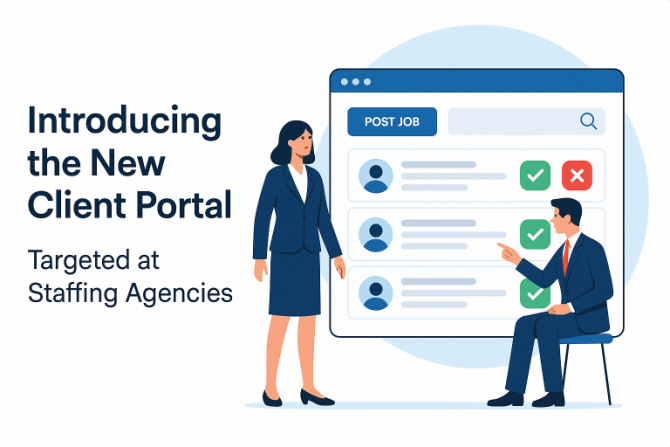
Hiring is a difficult process. Just the thought of it brings a sigh up from the lungs of every recruiter across the globe. The stress of finding the right talent is high, and it all begins at the interview. Whether it be a candidate or a recruiter, interviews can be a stressful experience for all parties involved.
In case you do not know, a job interview is a social meeting where a candidate and a recruiter meet and ask each other questions to determine whether:
- The candidate is worthy of being hired.
- The company interests the candidate.
As with most things, interviews can happen in a wide variety of ways. They can take place face to face, over a video call, be one-on-one, or involve a group of interviewers. However, the main distinguishing factor between interviews is their structure. Interviews can be structured, semi structured, and unstructured.
In this article, we will take you through what each of them means, as well as their advantages and disadvantages. So, without further ado, let us get right to it!
What Is a Structured Interview?
A structured interview is the most accessible of the lot. In this kind of interview, the interviewer asks the candidates a set of questions that were predetermined. The defining feature of this interview is that the interviewer asks every question on the list, in the same order, to every single candidate. The interview concludes when the questions end.
By asking the same questions to everyone, the interviewer gets the baseline of data across all candidates. No matter how well the interview is doing, no matter whether the candidate is uncomfortable, or even if there is a rapport between the people in the room, this interview aims to get the required information, and that is that.
No wonder, then, that these interviews are also called formal or standardized interviews.
What Is a Semi-Structured Interview?
A semi-structured interview, as the name suggests, is not as stringent as a structured interview. It is something of a midway point between structured and unstructured interviews, which we will discuss after this.
Basically, a semi-structured interviewer also has a few predetermined baseline questions to gauge the value of a candidate in relation to the others. However, it is also much more open. It actually allows the candidate to engage in a conversation with the interviewer.
This means that there is room for the interviewer to gauge any other skills the candidate might have outside of what they are being interviewed for. This unlocks the possibility of the candidate being used for more roles down the line, should they get selected. It is also a more stress-free environment for the client, making it easy for them to showcase their talents.
What Is an Unstructured Interview?
An unstructured interview is the most casual of all three types and is very free-flowing. There are no questions prepared beforehand. The interview’s direction is completely determined by the flow of conversation between the candidate and the interviewer.
Just because it is mostly informal does not mean that the goals are different. The end goal is still to judge whether a candidate is a good fit for your company, and that is something to be kept in mind throughout the process. It is through the process of a welcoming conversation that you can extract all the necessary information.
What’s more, this will leave a good taste in any candidate’s mouth! They will feel that this is a relaxing environment to work in and make them want to work for you.
Differences Between Structured, Unstructured, and Semi-Structured Interviews
The three kinds of interviews are quite different, to be sure. But how different are they exactly? In the table below, we will attempt to show you just how many ways there are in which they differ. Here we go:
| Structured | Semi-Structured | Unstructured |
| When it comes to choosing between candidates who score similarly on the scale, this kind of interview has no failsafe to determine who gets the job. | By combining both scales and an unstructured discussion format, this system is best poised to pick the best candidate for the job since it has both at its disposal. | For candidates who have near-identical experience and degrees and qualifications, an unstructured discussion could be the key to finding someone who fits. |
| Because structured interviews start and stop with the questions, it can be rather intimidating for the candidate. They might feel ill at ease with the utterly mechanical interview and lose interest in the prospective job. | While it still contains the stiffness of an assessment, this method of interviewing also offers the candidates more leeway by allowing them to speak their minds with more freedom. | The very nature of an unstructured interview puts the candidate at ease by making the experience feel like less of an assessment and more of a conversation. |
| When it comes to giving candidates a way to demonstrate skills and competencies, structured interviews, with their to-the-point questions, far exceed the other two. They were made to evaluate and employ all the tools with which to do so. | Semi-structured interviews also retain a sense of allowing candidates to show what they are made up of by demonstrating skills and competencies, but not to such an extent as structured interviews. | In contrast, because of the loose nature of the unstructured interview, candidates might get confused by all the talking. The process would need to be explained to them beforehand. |
| Structured interviews are objective to a fault - so much so that there is no room for subjectivity. With their utter reliance on scales and evaluations, these interviews almost always have a winner. | Semi-structured interviews have a lot of wiggle room. They can depend on both subjective opinions and objective evaluation to choose the best possible candidate for the job. | Due to the lack of structured questions and a scale of points for reference, unstructured interviews have a hard time comparing and evaluating candidates based on objective guidelines. |
Similarities Between Structured, Unstructured, and Semi-Structured Interviews
The relationship between the three structures of interviews is mostly based on their differences - structured and unstructured interviews, most especially, for they are polar opposites. However, beyond the structured interview advantages and disadvantages and those of semi-structured and unstructured ones, there are some broad similarities to speak of that unite the three.
Firstly, they are all designed to find the ideal candidate, although they have different ways to do it. They go by different measures, but at heart, their goal remains the same. Secondly, these interviews were designed to work on a generalized majority of the population. Of course, different structures favor different jobs and candidates, but they were made to appeal to the masses in their particular niche.
Finally, these interviews were designed to be used by interviewers as they saw fit. There is no hard and fast rule for any firm stating that they will only have one kind of interview and nothing else. They are three prongs of the same tool and should be used when the need arises for each.
And there you have it. Those are all how structured, semi-structured, and unstructured interviews are similar.
Which Interview Style Should You Choose?
This is a question that many HR reps want an answer to. However, there is no clear winner here. It does not depend upon you what kind of interview you plan on using. It all depends on the kind of job you are advertising for, what kind of firm you represent, and what your parameters of deciding a final candidate are.
If, for example, you want to fill a role that requires procedural thinking and sticking to a certain way of doing things, a structured interview could work best. This also works best if your candidate selection process requires you to make comparisons based on baseline data. For example, to be a journalist, you can make candidates write an article on a topic as part of the interview. Based on the evaluation of the article, their chances of hiring are determined.
Unstructured interviews work best when you want to gauge the soft skills of a candidate. How they talk, how they behave, how they handle conversation and curveball. For a sales job, this sort of interview is perfect. On the other hand, a semi-structured interview combines the best of both worlds. A good example of this is programming.
If you give your candidates a programming task, ask them to create code that does a specific task but with no guidelines on how to achieve that. People will surprise you with their creativity. You might end up valuing that more.
How to Conduct an Unstructured Interview
An unstructured interview, though it might seem chaotic, actually has a lot of preparation that goes into it. You, as the interviewer, need to not only evaluate candidates, but you have to do it while holding a casual conversation. To successfully pull this off, you need to keep a few things in mind. Here is what you need to do to conduct an unstructured interview:
1. Do Not Ask Leading Questions
This is a no-brainer. You are not doing a structured interview. You want the candidate to talk and tell you about their skills and experiences. Leading questions will merely shut them down. You do not want to dictate the flow of conversation by directing their attention to specific things. Instead, frame your questions in such a way that it allows them to give their opinions more.
For example, a leading question would be something along the lines of, “In what ways did this product appeal to you?” As you can see, the focus of this is quite narrow and limited. Instead, try, “What do you like about this product?” This way, there is more room for them to play around with responses.
2. Ask Follow-Up Questions
Since you are not asking questions designed to extract information directly, you will have to ask a slew of follow-up questions to get all the facts you need. Candidates have their own thought process when telling you about an experience, and they will think that you can understand the impact of this experience. However, you are not them, so you can’t. In this situation, ask them more questions.
For example, how did this experience make them feel? What did they do in response? What did they learn? Would they seek this experience out again? Why, or why not? What have they applied their knowledge to? It might sound like a counseling session, but that is because it is. You are there to listen actively and make a judgment based on the facts presented. You will need to master this to do so.
3. Record Your Findings
When speaking as a result of a stream of consciousness, candidates will talk themselves in circles. When they do so, it is very common that the things they say will be incomplete, unclear, or even contradictory. Mostly, this happens because it all makes sense in their head, so they feel no reason to explain their thoughts.
In this situation, you should strive to take as many notes as possible and be as accurate as you can. By keeping extensive notes, you can refer back to the conversation and make your decision wisely. The topics about which candidates are unclear or contradictory will tell you a lot about how they think, and then you can make your mind up about whether you want them around.
How to Conduct Structured/Semi-Structured Interviews
Though structured vs. semi-structured interviews have some similarities, they need to be approached differently. First, we will take a look at the ins and outs of structured interviews:
- Take your time to figure out what questions contribute most towards picking the ideal candidate. You will be making all judgments based on this, so give this stage all the attention it deserves.
- Once you have your questions, you need to create a scoring system like a point-based system. You will have to score the answers given by the candidates, so you need to decide what parameter deserves what kind of score.
- It will be difficult to memorize it all, so print out the questions and the scoring scale to bring with you to the interview. This will allow you to focus more on the answers and being in the moment in the interview rather than trying to score as you go.
- Going off the last point, it is unwise to score candidates while giving the interview. Instead, take active notes of how they respond to your questions and try to make these as accurate as you can. Having these notes will help you score a candidate properly based on their answers.
- Once the interview is done, take your time consulting your scoring scale to rate the answers from your notes. This will streamline the process of holding a structured interview.
Now that we have finished up with structured interviews, we will focus on semi-structured interviews and how they work:
- As with structured interviews, spend some time determining the questions you will ask in the interview and come up with a scale with which to judge and rate the candidates’ responses.
- Think of a few open-ended questions to throw their way as well. Of course, it is best if you ask these during the interview itself so you can take advantage of the context to frame them properly.
- Actively listen to the candidate’s answer. If they are unclear or nervous, ask additional follow-up questions and make sure you know what they are talking about.
- Use the free-flowing portion of the interview to gauge the candidate’s soft skills, and after the interview is done, consult your questions and answer scale to determine how well the candidates did.
As you can see, there is some overlap between the two kinds of interviews, but they are very different indeed. However, if you know how to conduct each of them, you will become a very flexible interviewer capable of handling any situation and any kind of candidate. That in itself is a valuable skill.
Boost Your Hiring Strategy With Talenteria
Hiring is an incredibly difficult process, and this is born out of the diversity of the talent pool and job descriptions and their interplay. Everyone needs a different way to showcase their talents, and you, as the recruiter, need to create an environment where they can flourish.
Thanks to years of experience in the HR field, Talenteria has an unmatched penchant for candidate management that puts other firms to shame. From creating and managing a career site and creating application forms to maintaining candidates and editing a talent pool, you'll find all the necessary hiring functions here.





